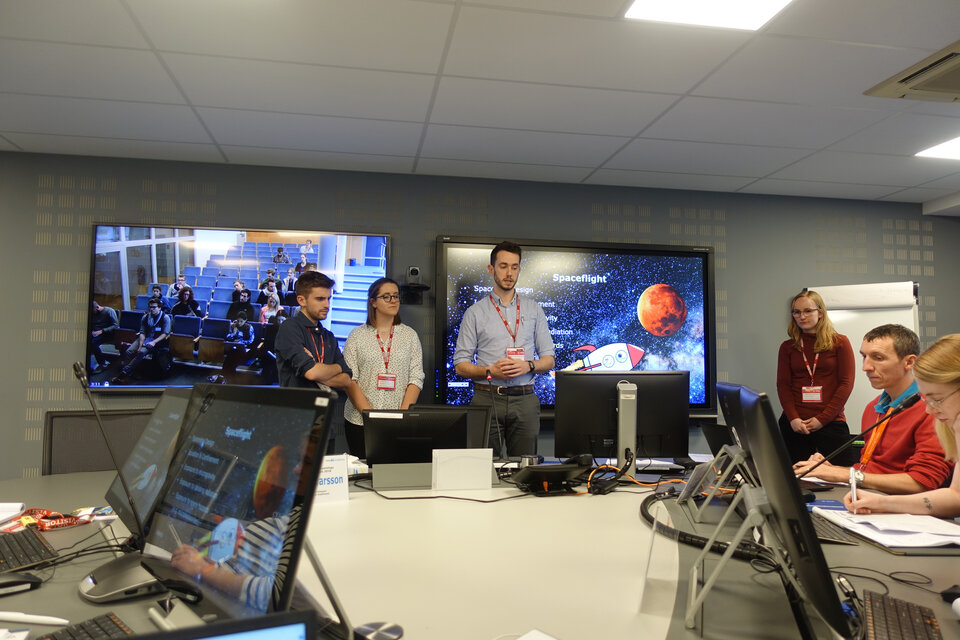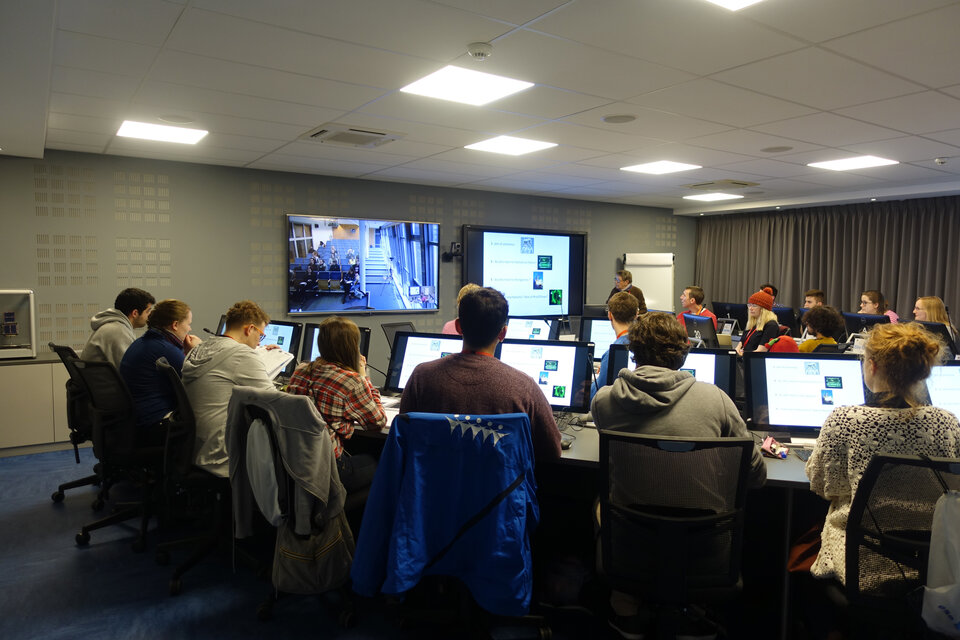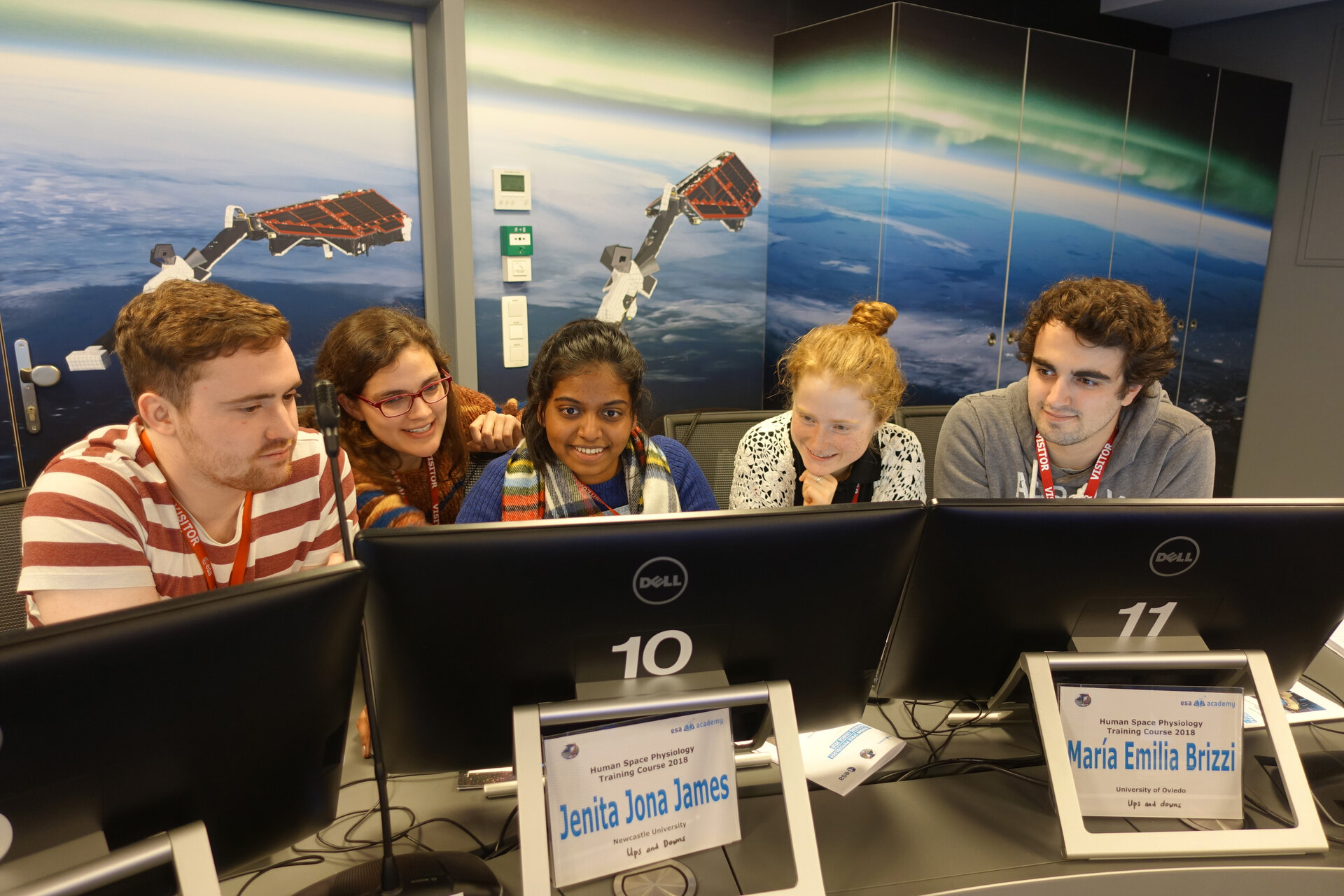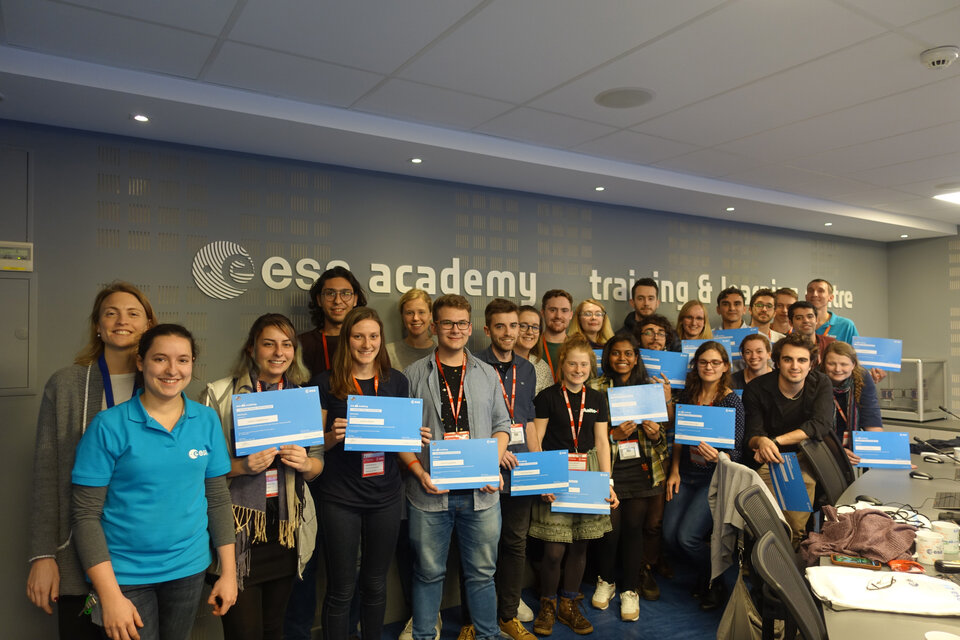University students complete ESA’s Human Space Physiology Training Course 2018
What is it really like to live in space? What happens to the body in microgravity? How do astronauts adapt to the extreme conditions of space travel? These questions, and more, were investigated by students participating in the Human Space Physiology Training Course 2018. Covering four days from 20 – 23 March 2018, this innovative course was a collaboration between ESA’s Education Office and the Space Medicine Team.
Two host locations ran the course together via videoconference. ESA Academy’s Training and Learning Centre, European space Security and Education Centre (ESEC, Redu) in Belgium hosted 22 university students from 14 different Member and Associate States. Meanwhile, 20 further students from European academic partner organisations (from 7 different Member States) participated from the European Astronaut Centre (EAC) in Cologne, Germany.
On-hand to offer guidance were 12 experts from ESA, DLR institute, the Institute for Space Medicine and Physiology (MEDES), and several European universities. A British student from Queen Mary University of London said, “It was an honour to hear talks from speakers with such expertise; especially hearing about life in space from an astronaut! I would recommend applying for this course to any student interested in space.’’

During the training course the students were introduced to:
- The history of human spaceflight.
- How the space environment differs from life on Earth, and the challenges it brings for current and future space exploration.
- How specific physiological systems respond to microgravity, including the underlying mechanisms and how these effects could be overcome.
- How the human body functions both in space and on Earth.
- The dangers of radiation. This was a new aspect of the training course, included in response to a suggestion made by students who participated in last year’s course.
“The lectures of this week gave me a more complete knowledge of how human physiology is affected in space,” explained an Italian student from Politecnico di Milan. “I was positively impressed by discovering the high number of methods that can be used to study those modifications. I particularly appreciated that those themes were treated both for the current space flights and ground analogues, as well as for the future missions and technologies more oriented to longer duration space flights, topics not generally discussed in universities.”

During the week, the students were also split into teams of 4-5 to work on group projects. Their challenge was to research future issues of human spaceflight. On the final day each team presented their findings to the others. Their topics, which demonstrated the variety of challenges we face, were as follows:
- Female flyers. As the gender mix of space crews becomes more balanced, how could/should female astronaut health be supported differently to that of males?
- Elderly extra-terrestrials. The average age of astronauts is currently in the late 30s, but is set to be older for exploration missions. Why might this be advisable, and what could the implications be of older crewmembers?
- Floating forever. What might be the major issues associated with long space missions of up to three years?
- Head for heights. Will there be psychological challenges of losing sight and real-time communication with Earth?
- Bouncing babies. What might the biological effects of being born in partial gravity be on human development?
- Robert or robots? Discuss the value and challenges associated with human-based surface exploration of a celestial body.
- Pet or pest? Discuss the role of animals in paving the way for human spaceflight, and discuss the rationale for and against human-animal co-habitation in space.
- Ups and Downs. Discuss the pros and cons of artificial gravity for long duration deep-space missions.
- Dust-busting. Apollo crews had significant medical issues associated with Lunar dust. What dangers does Lunar dust pose, and discuss possible measures for a future “lunar village”.
- Ticket to ride. What are the medical challenges facing private companies such as Virgin Galactic, XCOR and Blue Origin, who are aiming to bring safe and enjoyable spaceflight to the masses?
Participants found the course hugely enjoyable and rewarding. In the words of a British student from the University of Warwick, "Without reservation, I can honestly say that this course has been the highlight of my eight years of higher education. The organisation and delivery of the programme was excellent and I learnt so much over the four days at ESEC. The course was full of fascinating talks from inspirational experts and I was even given the opportunity to experience a simulated Moon walk at the European Space Centre. A fantastic week with fantastic people! Thanks very much ESA!"
For details about future ESA Academy courses please visit the Current Opportunities webpage.
For more information please contact: esa.academy @ esa.int



